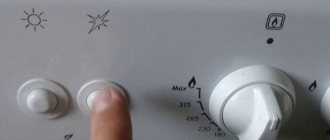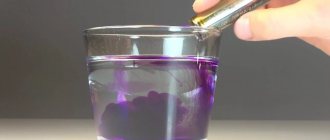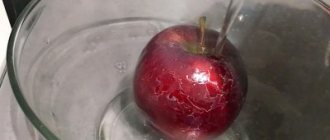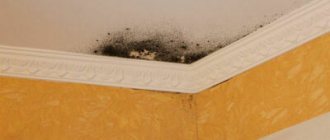Sterilizing jars in the oven is a very common, simple and effective way to disinfect containers for preservation. Like any other, it has its advantages and disadvantages. In the article we will talk about the rules and subtleties of the process so that you can decide for yourself how suitable this method is for you.
One of the advantages of oven sterilization is the ability to simultaneously prepare a large number of jars
Is it possible to sterilize jars in the oven?
Before learning how to sterilize jars in the oven, empty or with blanks, you need to understand whether processing dishes at high temperatures in the oven is allowed? Sterilization using the traditional steam method gives good results. But this method is not always practical. If you need to process a lot of dishes, then sterilization turns into a long process, since only one container is placed above the boiling water in the kettle.
For successful preservation, you need to properly prepare the container.
To save time, housewives discovered all the benefits of heat treatment in the oven. This is one of the safest options, provided you choose the optimal mode. In this case, it is necessary to follow certain rules, then the jar will not burst, and all bacteria will be destroyed.
It is important to immediately prepare a suitable container that will not burst.
Basic Rules:
- The household appliance must be clean before use;
- the glass container is sterilized immediately before placing the workpieces;
- the jars should not touch (they must be arranged in a free order);
- avoid sudden changes in temperature (the container may burst);
- observe the timer;
- Do not allow cold water to come into contact with dry, sterilized jars.
It is necessary to carefully inspect the containers. If cracks or chips are found on the neck, such containers cannot be subjected to heat treatment.
Important! Before heat treatment, containers are placed only in an unheated oven. After sterilization is completed, they must cool down before they can be removed.
Dry disinfection of jars in the oven is effective, kills all bacteria, eliminates the possibility of burns and stuffiness in the room (which is typical for the steam sterilization process).
Using an oven you can carry out high-quality sterilization. In addition, the containers will not need to be additionally dried, which often takes a lot of time.
Advantages of the method
High-quality sterilization is carried out in the oven.
- The advantage of this procedure is that you will not need to spend a lot of time on additional drying of the containers.
- The main advantage of this method is that there is no need to separately heat each product. The oven can accommodate several glass items at the same time. Its capacity is much larger than a microwave, in which you can sterilize a maximum of 5 containers.
- This procedure can be carried out both with empty products and with blanks. It doesn’t matter whether it’s preparing salads from vegetables or pickled cucumbers and tomatoes.
How to Sterilize Empty Jars and Lids in the Oven
Before heat treatment, jars and lids must first be prepared. In this case, only metal lids are subjected to dry sterilization. The containers should be free of chips, scratches, cracks, rust (applies to lids) and other abrasions. This is necessary to prevent the seal of the vessel from being compromised both during processing and during further storage of the workpieces.
The lids, like the jars, must be thoroughly rinsed, and then placed in a pan of water and boiled for 15 minutes.
Lids and containers are thoroughly washed and rinsed. If chemicals are used for cleaning, you need to rinse longer with running water. In the first option, the container is installed with the neck down, in the second – up, to evaporate excess water.
Both dry and wet vessels can be sterilized in the oven.
Preparation
The sterilization process must begin with careful preparation. Please note the following important points:
- clean and empty oven . Thoroughly wash the interior surfaces of the oven to remove carbon deposits and grease. It is best to do this using natural remedies - vinegar and soda. Remove all unnecessary elements from the chamber (baking sheets, frying pans, etc.) and leave only a wire rack or one baking sheet;
- whole and clean jars. Carefully inspect the jars and make sure there are no defects (cracks or chips), otherwise the glass may burst during the heating process. Wash the containers inside and out with a solution of laundry soap, and then clean with soda. There should be no stains, streaks or rust left on the walls. If you use special dishwashing detergents, rinse the jars thoroughly with running water to get rid of chemical residues;
- correct inventory . Prepare in advance the oven mitts and tongs needed to remove hot jars and lids, as well as several clean kitchen towels on which you will place sterile containers.
Use only new, clean sponges to wash jars. Those that are already in use quickly absorb leftover food, grease, and detergents and are a real breeding ground for bacteria!
Heavily soiled jars, covered with dust and greasy deposits, require additional treatment - before washing, it is recommended to soak them in a soapy solution for 2-3 hours
The oven can sterilize both wet and dry glass containers. After washing, wipe the jars with a clean towel or place them upside down to remove any remaining water.
Sterilizing jars in an electric oven
Sterilizing jars in the oven of an electric stove is much easier, since the temperature in such a device is evenly distributed.
Heat treatment is carried out according to the following instructions:
- the oven must be cleaned and free of foreign odors;
- clean containers and metal lids without rubber are placed on a wire rack or baking sheet in a loose order, not tightly to each other;
- place in a cold oven;
- heating should be gradual and take place at a certain temperature range: 40° - 2 min, 60° - 1 min, 80° - 1 min, 100° - at least 1 min (the maximum temperature for sterilizing glass jars in an electric oven is 120-150 °);
- After the set timer ends, wait 5-10 minutes until the containers cool down.
You need to carefully remove the jars using oven mitts and towels.
For reference! If hot pouring is used for preservation, you can use hot jars. Warm or chilled products are placed only in chilled containers.
When processing dishes in an electric oven, you need to take into account the location of the heating elements. It is necessary to install containers at the same level or increase the disinfection time interval for items placed on the lower tier of a household appliance.
There are many benefits to using ovens for sterilization. Such seams are perfectly stored and almost never explode.
Other sterilization techniques
Sterilizing jars is a labor-intensive and unpleasant procedure. Modern technology comes to the rescue in this matter, offering disinfection, for example, in a double boiler or microwave oven. Each technique has its advantages and disadvantages, but only the housewife herself chooses the method in which to process the workpieces.
Disinfection of jars by boiling
Boiling sterilization is popular even now. To do this, it is enough to have a large heating container and water on hand. The size of the pan depends on how many jars need to be sterilized in it at once. The container must be completely immersed in the liquid.
The process does not require additional equipment and is as follows:
- The jars are placed in the pan with the neck up (or horizontally). A rag or wooden pancake is placed under it.
- Cold water is poured so that the entire area of the jars is covered.
- The duration of treatment in boiling water is 15 minutes.
This method is inconvenient to process 3-liter bottles. Before you start sterilizing jars, you should make sure that they will fit in the pan. Along with the container, lids can also be processed.
Microwave sterilization
A microwave or microwave oven is a powerful device that can sterilize glass jars for sealing. To do this, you must meet a number of conditions:
- Only thoroughly washed, inspected jars should be placed in the oven.
- Metal lids cannot be disinfected in this way.
- Pour 10–15 mm of water inside the jar or place a container of water next to the empty container.
- For sterilization, a mode of 700-800 W is used.
- Processing time for cans is 5 minutes.
Disinfection in a slow cooker
A modern method of sterilizing containers before sealing is processing in a slow cooker. For the process you need:
- Wash the multicooker bowl well and pour 250–300 ml of water into it.
- Secure the mesh and place the washed jars in it, neck down. Their number will depend on the volume of the device.
- The lid should not be lowered.
- Sterilization is carried out with the “steaming” program. If there is no such option, the “baking” or “stewing” program will do.
- For cans with a capacity of 500 ml, 5–7 minutes of processing is sufficient, for liter containers – up to 10 minutes.
In a classic multicooker, you can immediately disinfect 2-3 half-liter jars. Covers for processing are placed next to the container or immersed in water, where they will be sterilized in boiling water.
Using a steamer
One of the advantages of a double boiler is the ability to sterilize dishes in it. The number of cans to be placed depends on the size of the device. For tall containers, you can remove one of the steamer sections. Sterilization is carried out as follows:
We recommend:
How to clean rabbit fur at home
- Water is poured into a special compartment of the device.
- The bottom section contains pre-cleaned cans, turned upside down. It is advisable to place them without touching each other.
- Lids are placed on the top “shelf” of the steamer.
- Sterilization takes place in the “cooking” mode.
- The whole process takes 15 minutes.
At the end of the cycle, you need to leave the container to cool. When removing jars, you should use oven mitts.
Sterilizing jars in a gas stove oven
The sterilization process in a gas oven is practically no different from processing in an electric oven. There is only one difference - the maximum heating temperature is 180°. The fire is lit at low power so that the jars heat up gradually.
For the first 5-10 minutes, the thermometer should show 50°, then the temperature increases to the limit set for the gas stove.
The volume of processed containers affects the sterilization time:
- 0.5-0.75 l – 10 minutes;
- 1 l – 15 minutes;
- 1.5-2 l – 20 minutes;
- 3 l – half an hour.
10 minutes are enough to sterilize the lids.
Reviews
For several years now I have been using the built-in oven for the Candy electric stove. The volume of the cabinet is such that it is very convenient to place jars of any size. After the heating is automatically turned off, the cooling fan in the cabinet starts working. It is very comfortable. I take the jars out of the cupboard while they are warm. I have never been burned, the jars have not burst.
Svetlana
And I still sterilize the jars the old fashioned way - I place a wire rack on a pan of boiling water, and the jars on it. Indeed, the whole kitchen is steamed after that, and then you have to wipe down the tiles on the walls. I add work to myself. We need to switch to oven sterilization.
Olga
Sterilization of empty cans is necessary when a disinfected product is placed in them. If you put only fresh vegetables or fruits that have been washed in running water into a sterile jar, then the pathogens that are on their peel will also get on the walls of the jar. This should be taken into account and before starting work, think about what is better - to sterilize empty jars or to first put food in them and then sterilize everything together. Of course, it is most convenient to do such sterilization in the oven.
Health to you and your loved ones! Natalya Belokopytova.
Pasteurization of cans in the oven
Processing at high temperatures is not always suitable for preserving the beneficial properties and taste of products. In this case, longer heat treatment at lower temperatures is appropriate.
Thanks to heating, the container is not only sterilized, but also dried. This saves time on additional drying of containers, as after steam treatment.
The time interval for pasteurization of empty cans is increased by 1.5-2 times, and the temperature is reduced by 10-15°. How to properly pasteurize a glass container:
- the jars are placed neck down in a cold oven;
- heating the space of the household appliance should be gradual (to begin with, set the temperature to 60°);
- after a few minutes, increase the degrees to the maximum temperature for pasteurization - 90°;
- processing time is at least 20 minutes.
After heat treatment, it is recommended to immediately cover disinfected dishes with a clean lid.
What are the differences between both methods of sterilization?
The most popular sterilization methods remain on the stove or in the oven. These processes are united only by the first preparatory step. The remaining stages are very different:
- in the oven the operation is much faster compared to the stove, since the temperature is much higher;
- no need to wait for the water to drain or for the jars to dry;
- high safety, because you cannot get burned from a dry jar pulled out of the oven;
- operation in the oven is much more comfortable, there is no accumulation of vapors, and there is no increase in humidity;
Of course, sterilization technology has changed over the years. With the advent of the latest household appliances, the canning process has become much easier. Kitchen housewives began to use modern appliances for these purposes:
- microwave;
- multicooker;
- dishwasher.
The newest method of preservation is the vacuum process, that is, a vacuum is used for sterilization. Life is impossible without oxygen. This means that if air is removed from any container, microorganisms will not be able to live, and this is a reliable guarantee of long-term preservation of products. However, in any case, it is imperative to wash the jars and sterilize them.
Household appliances Oven
How to sterilize jars with blanks
Many recipes for preparations require sterilization of glass containers along with the ingredients. This is necessary to ensure that canned foods last longer.
Most recipes for winter preparations require sterilizing jars in the oven along with the ingredients.
How to properly sterilize filled jars in the oven:
- glassware can be placed not only in a cold oven, but also in a slightly heated oven;
- there should be a distance of at least 5 cm between the cans (up to 6-8 cans with a volume of 1-1.5 l can fit);
- each jar can be covered with a metal lid (you cannot screw it on);
- set the required temperature (mostly 120°).
Place containers with ingredients without lids in a cold oven.
After heating to the desired degrees, you need to set a timer. The minutes are recorded from the moment when the surface of the workpiece begins to boil. If the recipe does not indicate how long heat treatment is required, then sterilization is carried out for the same amount of time as for empty jars.
Leave to sterilize for 20 minutes (time may vary depending on the volume of the container).
After completing the process, the containers with the ingredients are carefully removed from the oven and immediately rolled up.
Cover the canning with a lid.
Important! Sealings are placed only on a dry towel. If it is even slightly damp, the jar may burst due to temperature changes.
Useful tips
- After sterilization, you should not pick up a hot jar by the neck. It may slip out of your hands or the neck may break off on its own.
- You should remove the cans very carefully, with both hands wearing mittens or using oven mitts.
- A white coating may appear on the walls of the container because the tap water is very hard, but it will not cause any harm. It usually appears when jars are sterilized upside down.
- In order not to miscalculate the time required for cooking, you should watch the oven door. After turning it on, it will fog up, and after a couple of minutes it will become the same again. When the last drops disappear from the door, then you can turn on the timer.
- Workpieces should not be placed in very hot containers.
- Metal lids should also be sterilized along with the jars in the oven. Nylon lids must be boiled on the stove.
If all points are followed correctly, winter preparations will remain tasty and healthy for a long time. To prevent cooled jars from bursting during the process of filling them with hot contents, glass products should be placed in a metal bowl.
Watch the video! Review of sterilization of jars with blanks in an electric oven
How to sterilize empty jars without an oven
Disinfection using an oven is just one of the options for processing cans. There are several other methods you can use.
For a couple
In this situation, you will need a saucepan, the size of which will depend on the number of jars to be sterilized.
The container is filled with water and brought to a boil.
As soon as the water boils, a metal sieve, colander or other structure that allows steam to pass through is placed on the surface. The containers are placed upside down on top. For containers with a volume of 0.5 liters, 10 minutes of treatment is enough, for 1.5 liters - 20 minutes, 3 liters - 30 minutes.
A sign that the jars have been sterilized will be large drops of water running down the glass.
For reference! A kettle, a double boiler, a pressure cooker, a dishwasher, and even a solution of potassium permanganate are also used for sterilization.
On the water
One of the easy and energy-intensive methods. In this case, you will need a large saucepan. The container is filled with water, jars are placed in it, put on fire and brought to a boil. After which the dishes are taken out and laid out on a dry towel with the neck facing up.
For heat treatment, 5 minutes in boiled water is enough.
Microwave
Killing germs in the microwave speeds up the disinfection process. Only cans can be processed; it is advisable to boil the lids in a separate container.
To remove the lids from the pan, it is better to first drain the water or use special tongs.
To carry out the procedure, jars filled with water (about 2 cm from the bottom) are placed in the microwave oven. Empty containers are prohibited. The maximum power and timer are set for 5-6 minutes. The water in the container should boil. After which the cans must be removed with dry oven mitts.
The larger the container, the more time it will take for heat treatment.
Leak test
The presence of defects on the neck in the form of cracks or chips may prevent the container from sealing tightly. In this case, air will penetrate into the jar, causing the food to oxidize and spoil. To avoid this, you need to check the degree of tightness.
Pour water into the jar. Make sure the outside of the container is dry. Close the lid. Shake the jar several times over a dry surface. If water leaks or drips from the jar, it is best not to use it for canning.
It is recommended to check all containers in this way. Although this will take some time, you will be able to prevent food spoilage that occurs due to insufficient sealing.
Sterilizing glass jars with steam on a kettle
The method is quite old, but many people still use it to this day. If there are no additional devices and accessories available, then the kettle can replace them.
The container is placed upside down on the spout and the heating is turned on. The liquid should boil. After 10 minutes, the container is sterilized and removed.
Remove the lid from the kettle and place the container there, neck down. This method is suitable if the jar is quite large and cannot be sterilized in any other way.
The work takes 10-15 minutes.
Is it possible to process it in an electric oven?
The electric oven is suitable for sterilizing canning containers. You can use this kitchen appliance even if its size is small, but the jar fits lying down. The convenience of processing in the middle of an electric oven lies in the ability to set the desired temperature and processing time. After the timer is triggered, sterilization stops and the jars are not subject to overheating.
Sterilization inside an electric oven occurs faster than described above. With a working electric oven, the timer and temperature relay of which are working properly, it is allowed to set the temperature to 150 degrees for a period corresponding to the volume of the container. When processing 3-liter containers, you need to set the timer for 1/3 hour, when processing one and a half liter containers - for 1/4 hour, when processing half-liter containers - for 1/6 hour.
To reduce the temperature difference, it is recommended that after sterilization is completed, open the electric oven door and allow the jars to cool without removing them.
Is it possible to sterilize jars with vinegar essence?
All work should be carried out in the following sequence:
- Pour cold water into the prepared jars up to the hangers, add 6 tbsp. l. 70% acetic acid. Use boiled water.
- Cover the top with lids and shake for a few minutes.
- Pour the contents into other containers and continue manipulating the same composition.
- In this way, the required number of containers should be processed.
- Dry the sterilized jars.











